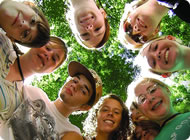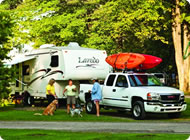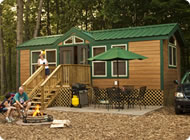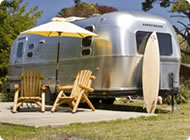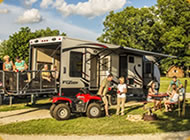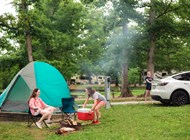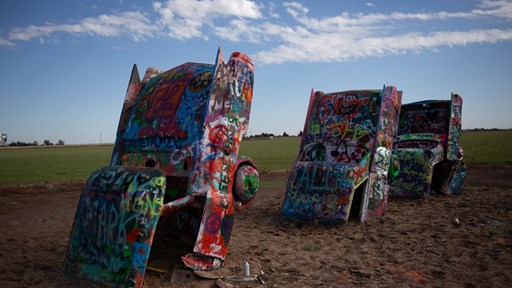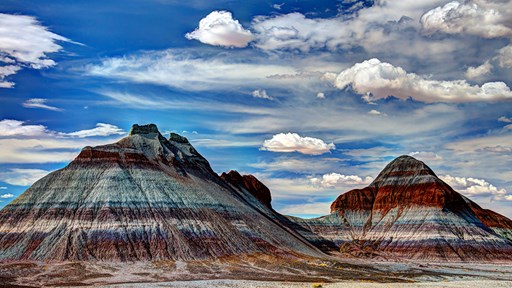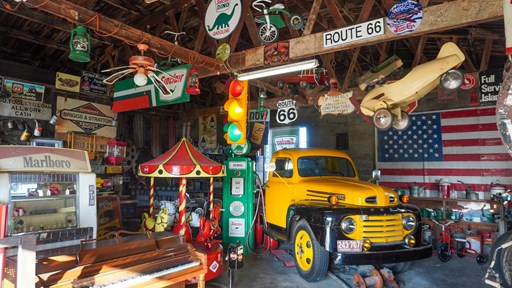Gazing up at the stars can reveal unmatched beauty in the night sky. Small pinpricks of light seem endless as you move away from the city lights. When you were a child lying in the grass staring up at the sky, you may have felt like you could just pluck the stars from above and hold them in your hand.
Think of the sky as a great invisible chalkboard and draw the constellations with your finger. Find the North Star beaming against the dimmer stars surrounding it. Trace a trail of bright stars that make up the tail of the Little Dipper. Track slowly upwards and connect the dots to form the lopsided bowl and then the jointed handle of the Big Dipper. Find the three glowing stars that form Orion’s Belt, and outline his body and sword.
When you go stargazing while camping, you can witness incredible wonders.
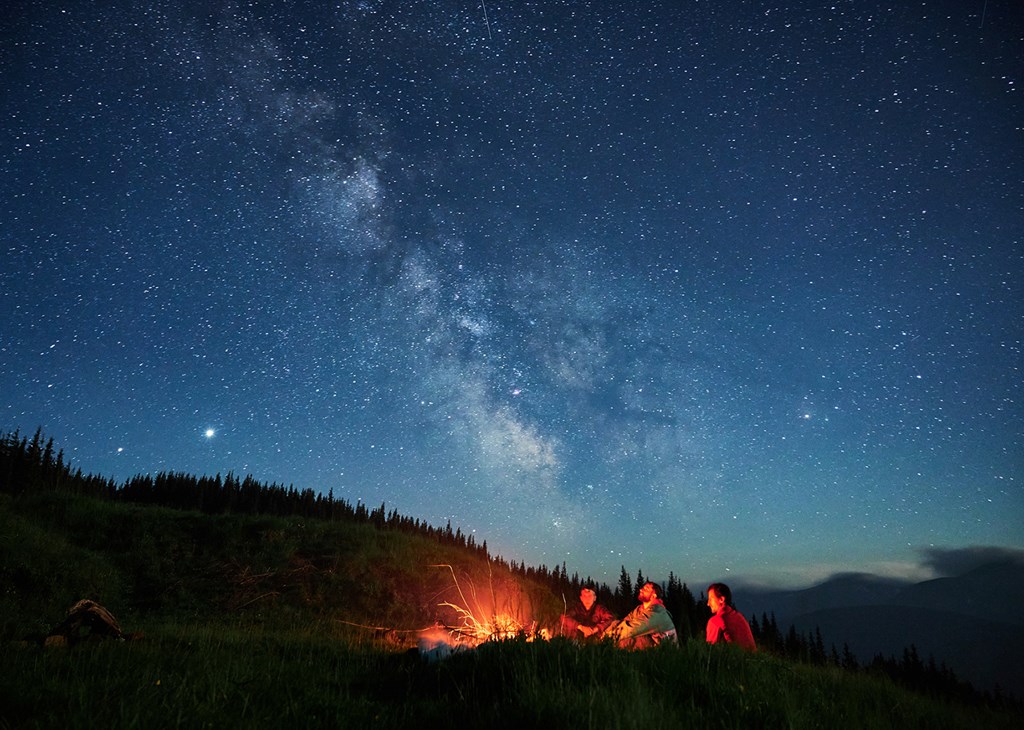
Tips for the Best Stargazing
Staring up at the stars is awe-inspiring, but it helps to know which constellations to look for, what gear to bring and how to make the most of your stargazing time. If you are wondering how to stargaze, consider these stargazing tips:
1. Do Your Research
For the best stargazing experience, it is oftentimes helpful to research the sky in your area to see what is above you.
Visit a local bookstore to find guidebooks with night sky illustrations. These guides often include tips on how to spot planets, comets and other night sky elements.
Various websites exist to help folks identify constellations. Some sites allow you to print a sky map that will show you where stars will appear and give you constellation lines and names to use as a reference. You can even use your phone to find helpful stargazing resources and apps. The iPhone-friendly SkyView – Explore the Universe or the Android Sky Map app provides information and assistance in searching for constellations.
Once you find one constellation, you can often build out from there, discovering nearby lines, angles and shapes of other constellations. As you do this, you will slowly map the whole sky and discover exciting sights.
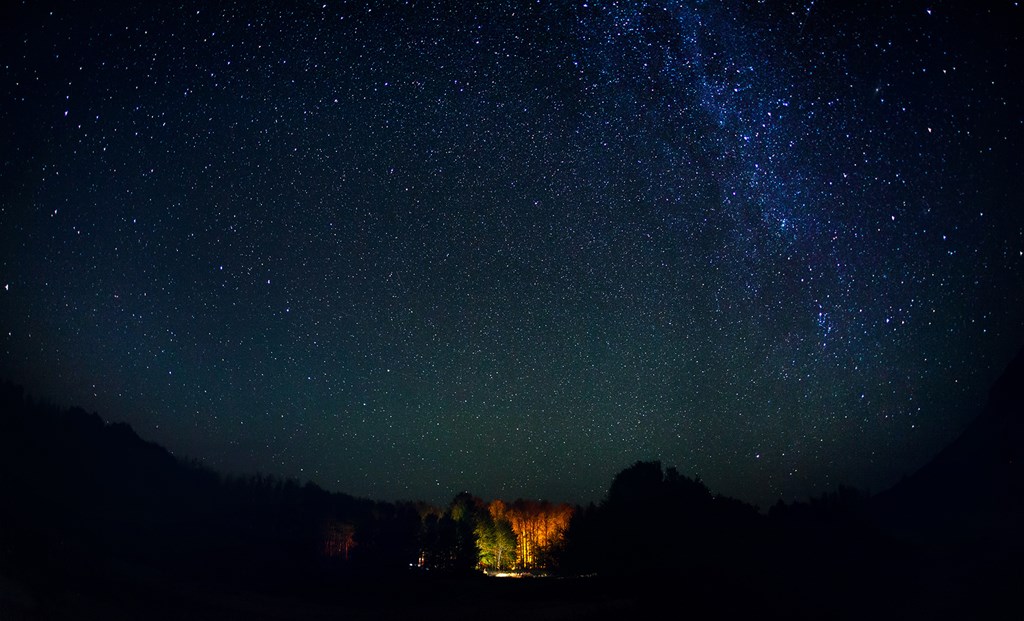
2. Monitor the Forecast
A stargazing experience can lose its luster on a cloudy night. Look at the forecast before you go to ensure a clear sky. Seek information on the moon’s phases. A full moon brightens the sky, making it harder to see the stars.
Check the weather to make sure you will be able to see the stars. Bring layers as well in case the temperature drops. That way, you can stay warm and cozy while you gaze up at the sky.
3. Find the Right Spot
Before you head outside to stargaze, figure out the best places near your campground to see the stars. Many states have dark sky parks far from highly populated areas and use minimal lighting to keep the sky clear. If you are looking for dark skies for stargazing, these are the best places to go.
If you want to stargaze close to your campsite, you can do that, too. Just step away from the main campsite areas. A dark, quiet place is the best stargazing setting. Move away from other campsites into an open area so you can have the best view of the sky. Lights can hinder your view of the stars, so find a spot as far away from artificial light as possible.
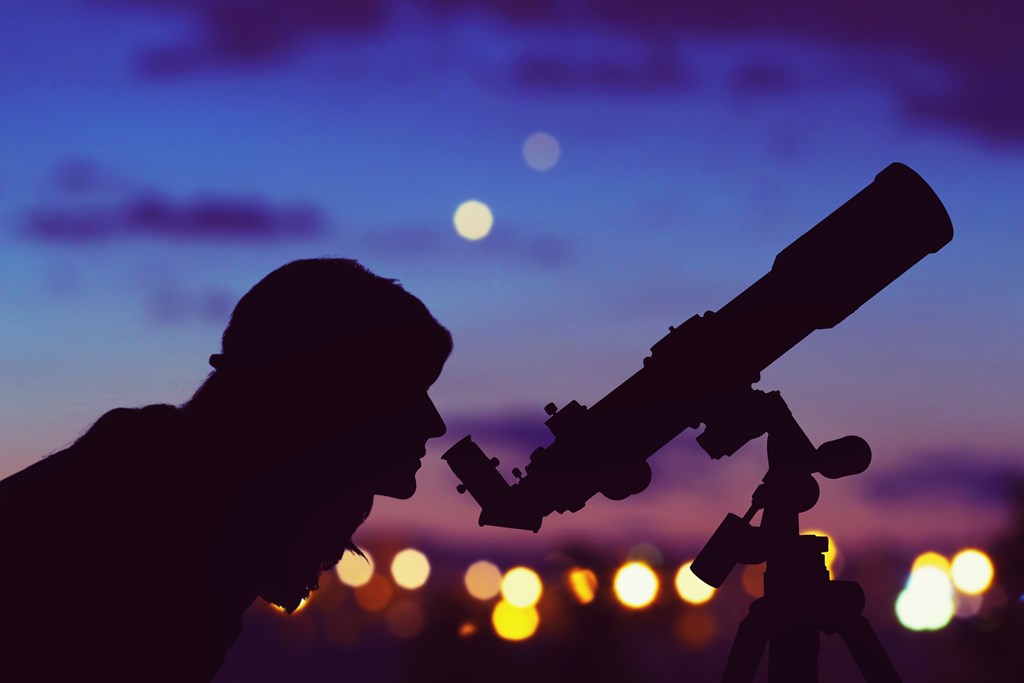
4. Create a Clear View
Lanterns and flashlights create light pollution that can prevent a clear view. Use cellophane or red paper to dim your white flashlight or lantern. This step will make the stars and dimmer constellations more visible. Turn your phone screen off or switch to a red viewing mode to keep your night vision intact.
5. Bring the Right Supplies
Make the most of your stargazing experience with the right gear. Here is what to bring for stargazing:
- Comfortable chair or blanket
- Water
- Snacks
- A star chart to help you find and identify constellations
- Binoculars or a telescope
- Warm clothes
While telescopes give a more focused view, you might not have easy access to one. Binoculars are a great alternative that can save you from spending money on expensive equipment. They are also easier to use for beginner stargazers. If you are camping with kids, you could make a telescope from paper towel rolls or other homemade items as a fun craft.
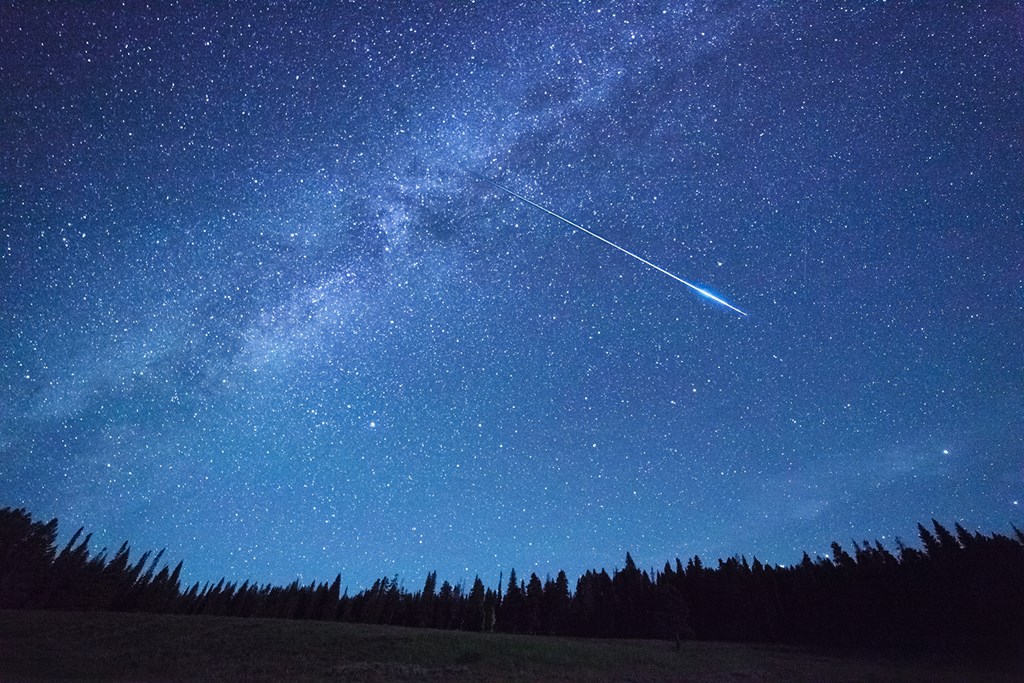
6. Let Your Eyes Adjust
Allow your eyes to acclimate to the surroundings after you arrive at a dark sky location. Turn off any flashlights, lanterns, phone screens and car headlights, then wait about half an hour for your eyes to relax. During this process astronomers call “dark adaptation,” your pupils will open to take in more light from the surroundings. You will have the chance to see even more stars and planets than when you first arrived at your stargazing site.
7. Look for Incredible Views
You can witness incredible views while stargazing if you know what to look for:
- Star colors: Stars often change color and temperature as they age. Try to find white, blue, yellow, orange or red stars.
- Constellations: These groups of stars are named after people, animals and objects. Trace patterns in the stars to find your area’s constellations.
- The Milky Way: Light from millions of distant stars makes up the Milky Way. It may appear as a faint cloud if you are able to see it. Look at the stars from February to October for the best view.
- Moon phases: Identify the moon’s phase while stargazing. You may see a full moon or only a tiny sliver of it, depending on where the sun is in relation to Earth and the moon.
- Wildlife: Watch for wildlife while stargazing. You may see or hear owls, bats, opossums, raccoons and other animals under the night sky.
- International Space Station: You can sometimes see the International Space Station at night when it passes overhead. Check online to see where it will be during your stargazing experience.
- Planets: Depending on the time of year and the location, you may spot planets during stargazing. Determine the planets overhead before you head out to look at the sky.
- Northern lights: Visit Alaska in the winter for a chance to view the northern lights.
Enjoy Stargazing at Kampgrounds of America
Camp at KOA to enjoy the great outdoors and marvel at the night sky. Whether you take in the view from your campsite, drive to a stargazing location or hike to a remote lookout point, KOA is the perfect camping and stargazing destination. KOA has over 500 locations across North America, so you can enjoy stargazing at your favorite destinations.
KOA offers various camping options, such as Premium Tent Sites, Back-In and Pull-Thru RV Sites, Deluxe Cabins and unique lodging options. Book a stay at KOA to relax, have fun and witness the incredible night sky.
Remember — the stars above your KOA Campsite continue to shine and still have stories to tell. All you have to do is look up.
About the Author: Kampgrounds of America
Kampgrounds of America is the largest system of open-to-the-public campgrounds in the world, with over 500 locations across the United States and Canada. Founded in Billings, MT in 1962, KOA’s family of campground brands – KOA Journey, KOA Holiday and KOA Resort – today serve more than a million camping families each year. KOA is dedicated to “connecting people to the outdoors and each other” by providing people with a variety of camping experiences and the information they need to make the most of their camping trip. Read more of their camping and travel resources by visiting KOA.com/blog.








